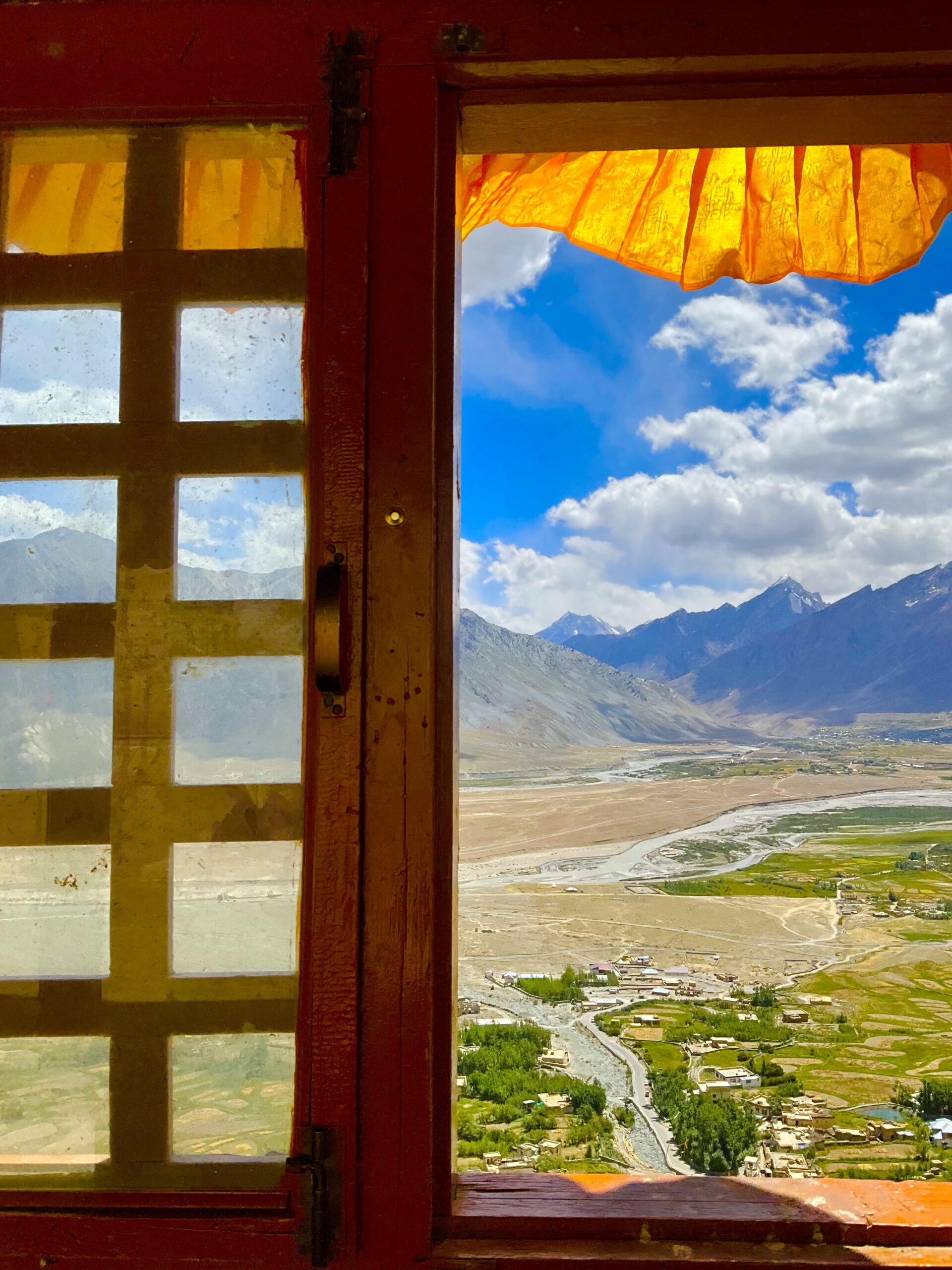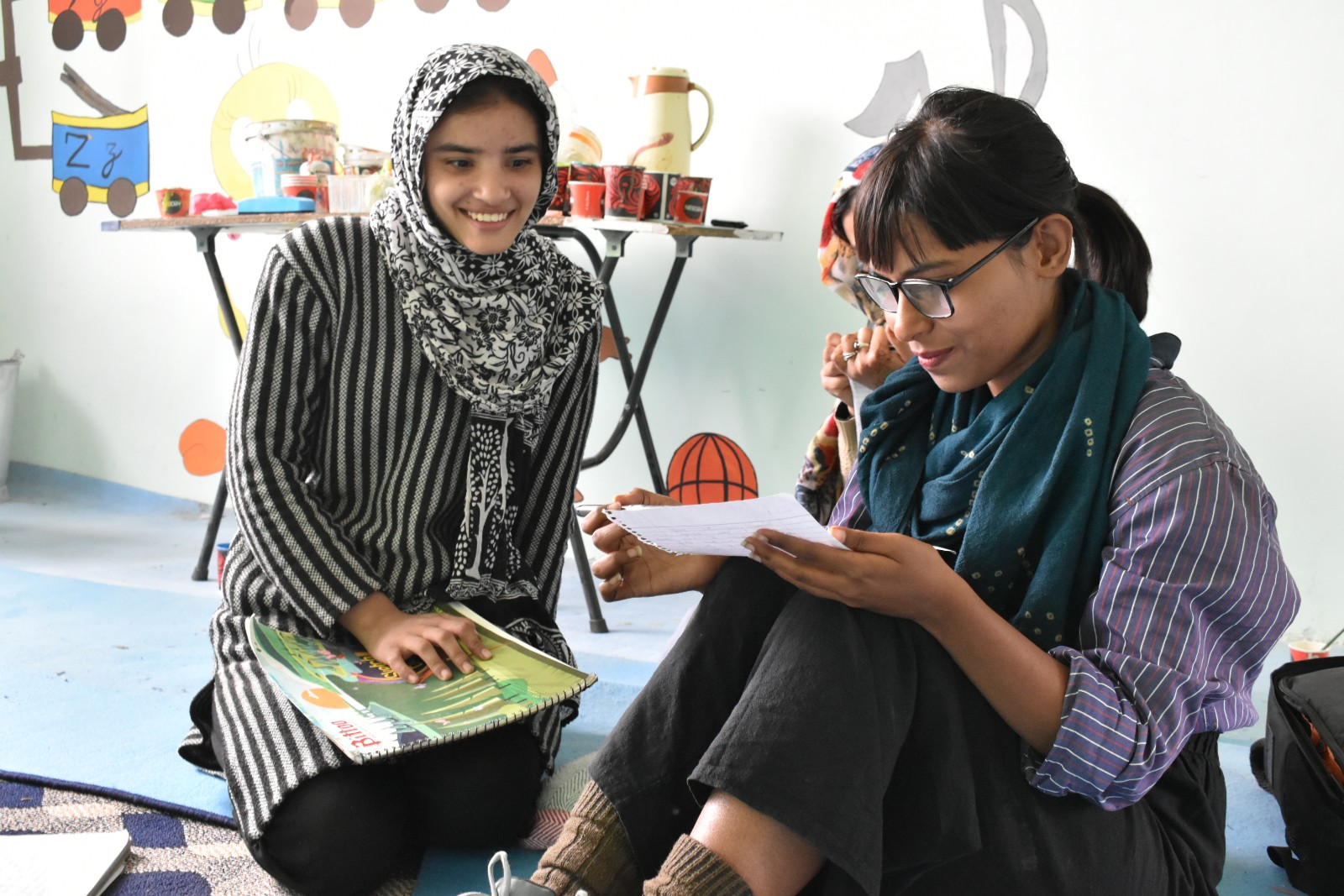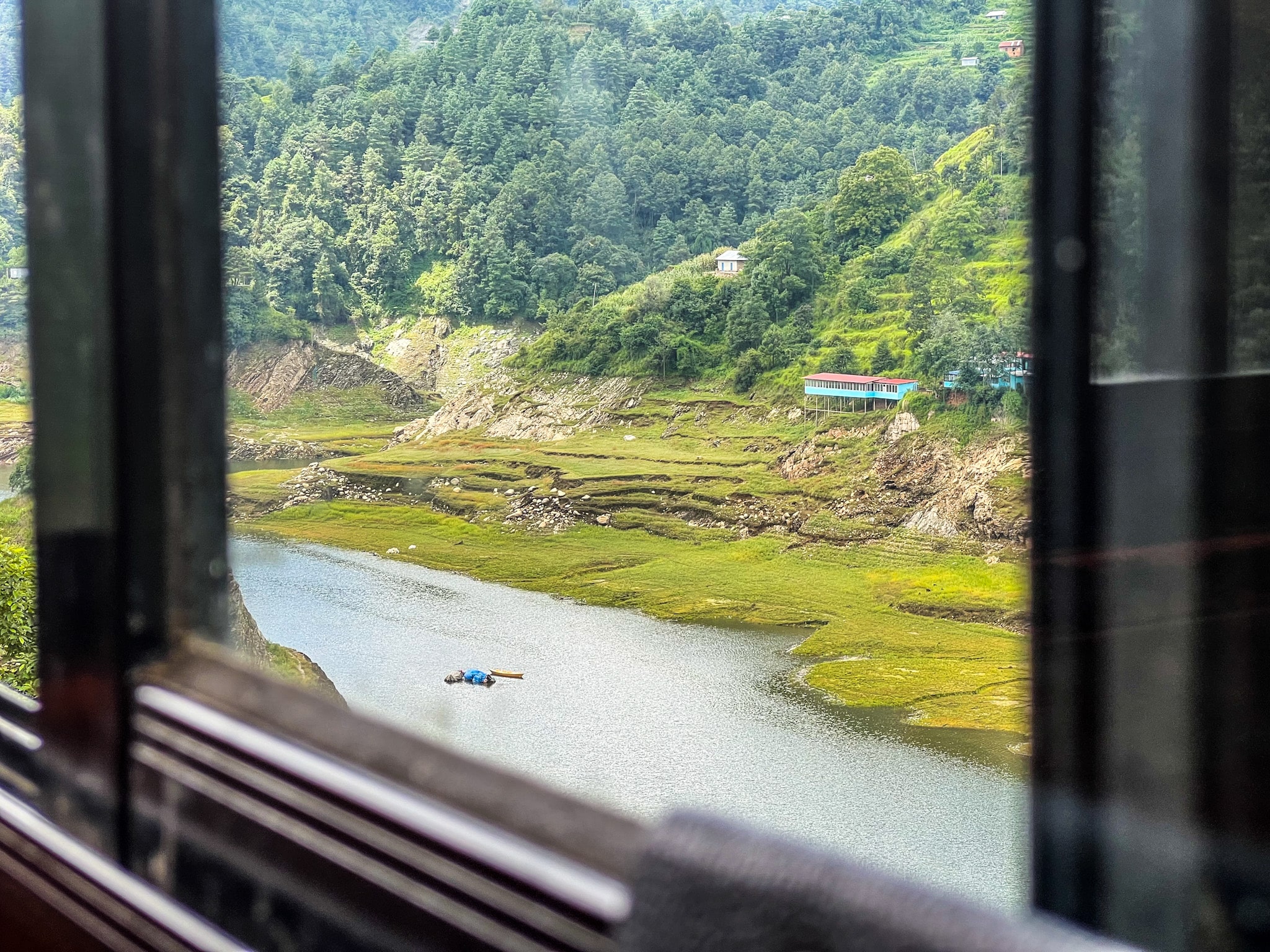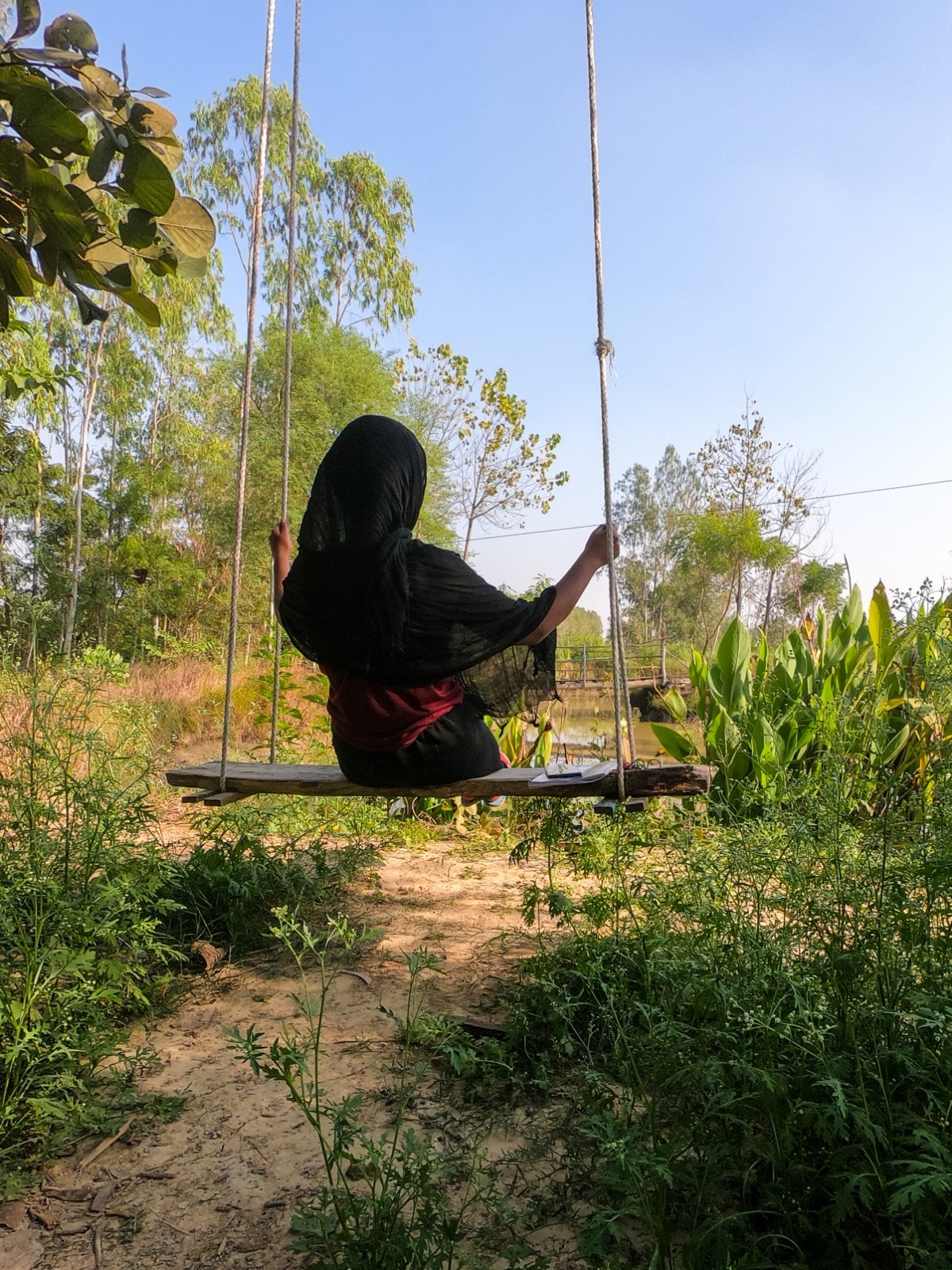Life in Zanskar is hard, being cut-off from the world for three-seven months in extreme winter. A semi-desert of Tibetan Buddhist philosophy. For one and a half months, I volunteered at a school and lived the life, though in summer. This is my reflection on how the landscape complements the philosophy in Zanskar.
‘That’s called the Milky Way’, I told Afreen without diverting my eyes from the universe.
The vision hasn’t left, it has holed in my psyche, deeper than a needle can scar a tattoo. Rising under a sky with no moon, the day of multiple emotions and regressions was hopelessly falling with the Milky Way.

I coaxed myself away from the gathered halogen lights around the kitchen tent. The hard lights had blasted the accumulated campground with no purpose, curating only the pseudo-vision of slumped white halos. Looking up, you see nothing.
The kids wouldn’t stop dancing to music. What was I thinking before taking 15 school kids for overnight camping at Tahan, a camp-village in Zanskar?
Camping Under A Mystery in Zanskar
Around the twinkles, the human-lights cease to drift. Humans don’t have the upper hand beyond their mechanisms. I scurry myself out in the valley’s natural darkness. From the bottom of absolute pitch-black existence, I saw the lights that only infused the celestial gratefulness for sharing the world with our spirits. One, two… Millions. Nebula of mysteries in tiny blinks, condensed in an artwork, the open world. Open love.
Stars, but no moon. Afreen, Mehbooba, and I get in a search. But no, no moon in the desolateness and vastness of the constellation.

The dogs won’t stop barking; the sound of their footsteps swinging from left to right of my tent, stashed with the wind that loses impression. I knew there could be no wild animals around, but the shadowing wind shook against the tent-cover in a way that infiltrated a false possibility. And I had to pee. I checked the time. 3 o’clock. I slowly unzipped the tent. The first instinct is to scrutinize any sign of wildlife.
I saw the moon. A force. A strong light in an intense diagonal blessing the Earth. It eradicated every other dip in the sky, yet co-existing with the presence of a higher conscience. The whole mystery of the sky had come to a centre, the mystery had changed shape, the mystery had touched the ground.
That’s Zanskar in Ladakh. One of the last places on Earth where Tibetan Buddhism has survived and re-surfaced its wings. Life in Zanskar is lived on the philosophy of survival and happiness.
Also read – Taste of Ladakh – Go Local with Ladakhi Food
Light, Shadow And Nothingness in Zanskar
Rain, with a knob that fails to control its intensity, often malfunctions in deadening heat in Zanskar. The bipolarity of the day scruffs the directionless, motionless windy non-rhythm. But the day’s wonderfulness always breaks down to simple loves.

Clouds and the sun play an intimate joy; a joy that can be played, tricked on the human mind, conditioned to the crevices of the open caves. The landscape is like an exposed anatomy of the human body, like today in school, Neida pointed at the lungs in the biology chart. It’s like someone has decided to bare the human body inside out, and sculpted and frozen the insides into an external manifestation. It’s like, “Okay, humans! This is how vast and empty you are inside, yet you are a wonder. A wonder in nothingness.” Miles and miles of matte-yellow rocks that practise the scrupulous art of pointed balancing, or unintended gaps in larger gaps. Where the desert is too empty, big rocks would decide to fall in, from the summit of the last sun-ray. Before you think, the last ray would stretch from the peak to the range, like an avalanche, turning upside down the geometry of colours. Topple it all, occupy space.
Light in Zanskar has taught me how to grow in space, how to claim the deserving connections, and how squeezing expands to a flow, without keeping a flow, without hoarding it. Just let a flow be flow. The prayer flags twitch and flap, they know that wind is power. As the Buddhists know, wind can populate the earth with the last man’s prayers. A random sound would emerge, a manifestation of a sad prayer, from Tibet, or Nepal.
(In case you want to know more about life in Zanskar, read this article by Voice of Ladakh here).
People Integrated in the Philosophy of Bells

Tanzin Wangbo. The Tibetan eyes, the sculpted Buddhist faces, long eyelashes, faces that reek of innocence by anatomy… Sketched and vilified… A single “Julley” relishes their sweet holdings, opening up the depths of their hospitality. Even before entering the home, the home opens to you. I wish “Julley” to Wangbo three times a day, every day, for I eat all three meals at his local restaurant. Our conversations are limited, to daily pleasantries, sometimes around the school, his village Karsha, and only once about Chhang.
‘The Nepalis are too drunk today. The police had to handle them. They are coming to the restaurant all drunk. What to do! Can’t say no to them’. It was indeed Independence Day. The police were all set in Padum. To manage the celebration.
‘Do you not drink Chhang?’ I made a subtle joke, to mock him for criticizing the drunk Nepalese. I knew the cultural reasonings of Zanskar, but I still wanted to pull Wangbo’s legs.
‘Yes, only two pegs of Chhang’, he laughed out. His long-covered eyelids moved even deeper, almost covering his eyeballs.
‘Do you want to drink Chhang?’ The helper is from Manali, spending only the business session in Zanskar. He said it matter-of-factly, casually, knowing the answer.
I surprised him with a ‘Yes, I would love to taste’.
That settled it. Wangbo would bring Chaang, a local homemade Ladakhi alcohol, from his stock. Chaang is culturally ingrained in Zanskari life, in marriages, pre-marriages, post-marriages, and in frigid winters. “It takes almost 10-14 days to prepare Chhang. First, we boil the barley grains (lhums), cool them down on a canvas of yak fur, then add starter culture (phabs), then fermentation and filtration. Each filtration takes almost 2-5 hours, and we keep doing it. It’s a lot of work, but it’s so good!”
As my luck had it, his stocks ran out, and I didn’t get to drink Chaang. So one evening, he brought Raksi for me from his home.

Chaang, like glaciers, has its functional footprint in Zanskari Ladakhi life. I see the glacier half-melted, with the crumpled eyebrows that hold responsibility. The responsibility to feed the semi-desert. An obligation to keep Tibetan Buddhist philosophy alive, not just in the thousand-year-old monasteries, or in the long lineage, but in the light that is only Ladakh’s. The flying lamas in motorcycles wearing dark sunglasses, the lamas in meditation… Buddhists teaching the philosophy of drinking Chhang. The daily philosophy that is simplicity with laughter. The philosophy of Julley. Khamsang.
The credo of bells. Sound is a memorial, a memorial of nothingness, immaterial, a reminder of the reverberated frequencies of silence and solace. The long chains of prayer flags are tied to a single point in a pole. They come in all directions, approach the pole, bend in the frenzied wind, and pose with the frayed and renewed clinking of bells; proud, vain. Proud that it contains all the powers of the world, it can invoke love, a love that lies with the caution of upholding.
Also read – Lamas Dancing in Masks at Phyang Festival Ladakh
Zanskar in Its Own Light (With Its Shadows)
Zanskar’s grey Tsarap River is a shade lighter than the new road. I see the road that took me to Sheela Waterfall. I see how the trails end in nothing, giving you an expectation that leads to nowhere, in a world that talks about achievements, success, personality development, and the ‘becoming’. Even the trails tell you there is nothing to be.

In the Ladakhi landscape, yellow meets the green. One can give birth, the other can’t. What would they say to each other? Green is flaunting. She has given birth to villages and farms that support human lungs and tummies. They know they exist together, they have to. Green gives birth to congregated togetherness of human warmth, yellow chooses the path of reasoning. Together they will sleep under a white sheet for seven months, before they know their time has come. There is nothing to hoard, no matter how happy the colour is, it has to make way, just to reappear in the world.
Ladakh has taught me that light and shadow exist together. Together they sketch the structure of life. In Zanskar, heavy wind can take your breath away, but in split seconds, sometimes together, sweltering heat can burn your body, even through the fabric of the cotton. Sun and clouds have a monopoly over colours, tones, emotions… Ladakh remains still, the way our mind should be. Through millions of years of erosion and the bulging threats of subsided Buddhism, Ladakh has meditated over all the Buddhas combined.

We are living through extreme climate vulnerabilities and I find it difficult to accept that. I wonder if the river feels any animosity towards human civilization. I wonder if it feels betrayed because we are so self-complacent. I wonder if the mountains will ever forgive us.
My mind is flushing like the first morning light, that came at once, like all the lights, feels, touches, and strifes of Ladakh. They come at once, and they stick. If a feeling has to emerge, the subtle touch is always deadly, the wind swaps the whole body in its whip, the heat scours to the edge of a heatstroke, with the dry wind diminishing the skin to volatility. Everything in Zanskar comes without premonitions, with not a tinge of understanding, the way life is, with its accidents and rebirths.
The philosophy of Zanskar is lived through its every stone, colour, light, shadow, and wind. Every rock speaks the life-anatomy of Zanskar. Synchronized. Lived.
Has a landscape ever touched you so deep in your heart?
Follow my solo adventures on YouTube, Instagram and Patreon.




Leave a Reply